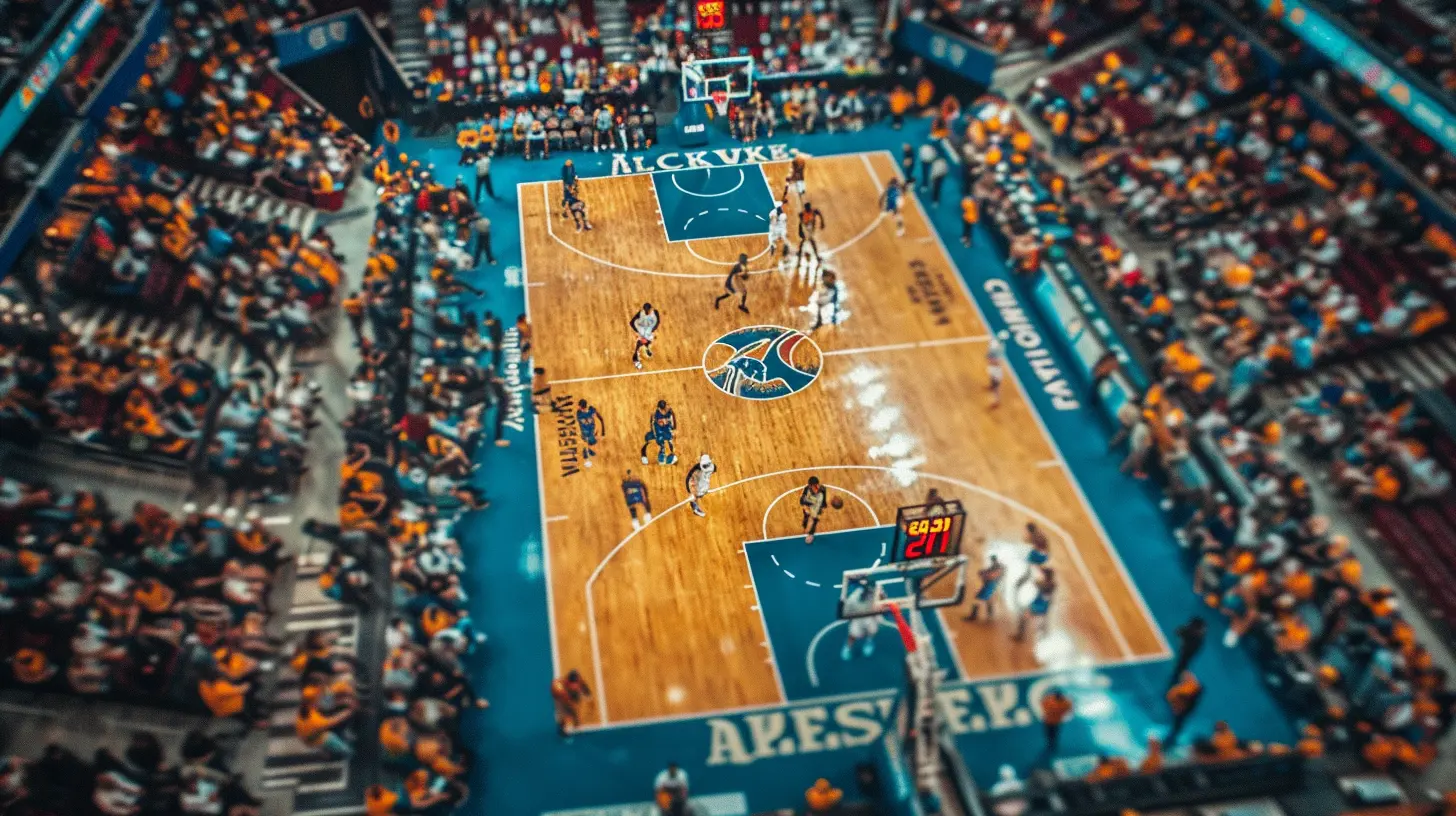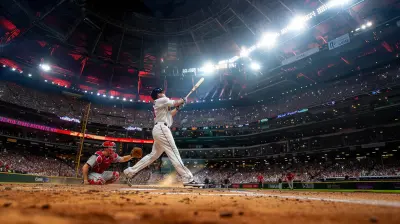Breaking Down the Tactics: How Strategy Plays Into All-Star Games
28 August 2025
Let’s be honest — when most people think about All-Star Games, they picture flashy dunks, half-court bombs, and zero defense. You know the vibe: players laughing, high-fiving, and putting on a show for the fans. It’s fun, it’s lighthearted, and it’s anything but serious… right?
Well, not exactly.
Behind the curtain of all that glitz and glam, there’s a bit more strategic thinking going on than you might expect. Yeah, it’s not Game 7 of the NBA Finals or the Super Bowl — but that doesn’t mean tactics are thrown completely out the window. In fact, strategy still plays a crucial role in the outcome of All-Star Games, even if it's wrapped in a big ol' bow of entertainment.
So, let’s break this thing down. How exactly do tactics work in a game that’s more about fun than fundamentals?
What Is an All-Star Game, Really?
Before diving into the Xs and Os, let’s set the stage. All-Star Games are essentially showcase events. Think NBA All-Star Game, NHL All-Star Game, MLB All-Star Game, and even the NFL Pro Bowl (although that one sometimes feels like touch football in slow motion).These games are exhibitions, not competitions with standings or playoff implications. The rosters are made up of the league’s best (or most popular) players, and the goal is usually this: entertain the fans.
But even within this “just-for-fun” framework, there’s pride on the line. No elite athlete wants to go out there and get embarrassed — especially not in front of millions of viewers. So while you won’t see hardcore defensive rotations or 10-man pitching changes in the first inning, there’s more going on beneath the surface than many realize.
The Balancing Act: Show vs. Strategy
Here’s where things get interesting. All-Star Games sit at the crossroads of two worlds — the playground and the playbook.On one hand, fans want to see the wild stuff: behind-the-back passes, no-look alley-oops, trick plays, and celebrations all day. But on the other, nobody wants a total mess. Even in games meant for fun, there's got to be some structure.
So how do coaches and players strike that balance?
1. Rotations with Purpose
Sure, not every All-Star coach is obsessing over plus-minus stats, but rotations still matter. Coaches often try to get players comfortable by pairing teammates or stylistically compatible stars together. You might see LeBron James and Steph Curry on the same squad, not just because of fan voting, but because they complement each other's styles.Strategic subbing also ensures everyone gets their time to shine — especially in leagues where playing time is a hot topic. A few minutes too few, and fans (and players) can start grumbling.
2. Chemistry Is (Kind Of) a Big Deal
You’ve got the best players on the planet sharing the floor — but that doesn’t mean they've ever played together before. Developing chemistry in a few practices (if there even are practices) is practically impossible.So, what’s the workaround? Coaches lean into simplicity. You’ll see basic offensive sets — very little scripting. It’s more about spacing, reading each other, and flowing organically. Think pickup run at your local gym… if your local gym had MVPs and Hall of Famers casually shooting 30-footers.
Teams often rely heavily on high-IQ players — the kind who know where to be and when to be there, no matter who’s around them. That’s strategy in disguise.
Defense? Yes, It Exists (Eventually)
Let’s not sugarcoat it — defense in the early stages of most All-Star Games is almost non-existent. It's not uncommon to see uncontested layups, open three-pointers, and funky matchups like centers guarding point guards just for laughs.But something fascinating happens in the fourth quarter (or sometimes earlier, depending on the format). The game tightens. The score gets close. The players start to care. And suddenly — boom — strategy takes over.
3. Crunch-Time Lineups Matter
This is where coaching decisions can shift from "meh" to meaningful. You’ll notice coaches carefully selecting their final five. Usually, they go with players who can create their own shot, defend multiple positions, and stay clutch when the heat is on.Want to win an All-Star Game? Stack your closing lineup with reliable scorers and switchable defenders. Because while the first three quarters are for the fans, the fourth is for the competitors.
4. Defensive Schemes in Disguise
You won't see a full-court press or a 2-3 zone breaking out, but you might catch moments of real defensive execution. In the NBA's All-Star Game, for instance, recent years have introduced the "Elam Ending," which has added a competitive twist by making it a race to a set target score. That’s led to some legit defense — trap plays, help assignments, even fouls to stop the clock.It’s like watching a sports car coast for three laps, then suddenly hit nitro on the final turn.
Offensive Flair with a Dash of Planning
Let’s talk offense — because it’s the heartbeat of any All-Star Game. Highlight reels don’t make themselves, after all.5. Playmaking Hierarchy
Even though every player on the court could be the No.1 option on their regular team, there’s still a subtle pecking order. Usually, the ball gravitates toward the best creators — guards and wings who can break down a defense, toss alley-oops, or drain threes from outer space.It’s unspoken but understood: Let the stars create, and the rest feed off the flow. That’s why you often see guards like Chris Paul or Luka Dončić orchestrating and everyone else dancing around them.
6. Mismatches Are Gold
Smart players hunt mismatches, even in exhibitions. Got a slow-footed big trying to defend a shifty guard? Time to cook. See a smaller player on a scoring beast? Feed the post.These one-on-one battles spice up the otherwise casual pace. Players want to show what they can do — and dominant matchups become their canvas.
Coaching the Uncoachable?
It’s gotta be a weird job, coaching in an All-Star setting. You're handed a team full of elite talents — many with bigger egos than Met Gala celebrities — and told to “make it work.”So how do coaches approach it?
7. Keep It Loose, But Tight Enough
The best All-Star coaches take a light touch. They build trust, throw in a couple of sets, manage egos gently, and mostly… get out of the way.But when the game is close late? That’s when the clipboard comes out. Great coaches know which buttons to push — who needs more touches, who needs to sit, and when to call that one play they practiced (once) before tip-off.
It’s more psychological than tactical. The Xs and Os aren’t everything — managing personalities is half the job.
The Fans’ Role in Shaping Strategy
You might not think fans have anything to do with tactics — but oh, they do. All-Star Games are built for the crowd, and what fans cheer (or boo) heavily influences gameplay.Fans love dunks? You’ll see a dunk contest breaking out mid-game. Fans want drama? Players turn up the intensity. And fan voting even decides starters — which can lead to less strategic rosters and more popularity contests.
It’s a weird blend of democracy and competition, and it definitely affects how the coaches and players approach strategy.
Different Leagues, Different Games
Not every All-Star Game is the same, either. Let’s peek at how different sports approach in-game tactics.🏀 NBA All-Star Game
Basketball allows for the most fluid and creative expression, so strategy is often read-and-react. But the introduction of the Elam Ending made a huge difference, forcing teams to close strong with intentional plays, real defense, and high-pressure execution.🏒 NHL All-Star Game
Hockey’s version has evolved into 3-on-3 mini-games. This format forces constant movement and lightning-fast decisions, which adds a layer of tactical nuance you don’t see in regular-season games.⚾ MLB All-Star Game
Baseball’s different. Every pitch matters, so while it’s still exhibition vibes, tactics like bullpen matchups, defensive positioning, and batting order still come into play — even if subtly.🏈 NFL Pro Bowl
Let’s be real — it’s mostly a glorified flag football game now. Strategy? Limited. But new skill competitions and tweaks may bring back a bit of thoughtfulness. Time will tell.The Bottom Line: Strategy Still Matters — Just Differently
So yeah, All-Star Games aren’t playoff wars. They don’t have chess-match moments every second like a Finals series or a World Series showdown. But they’re not completely carefree either.Strategy shows up — just wearing a different outfit. It’s subtle, smooth, and sometimes hidden under a layer of smiles, trick plays, and three-point barrages. But it’s there. From lineup decisions to late-game execution, tactical thinking plays a role.
So the next time you’re watching an All-Star Game and thinking, “Eh, it’s just for fun,” take a closer look. You might just catch a play call, a strategic sub, or a clever mismatch being exploited — and realize there’s more depth behind the dazzle than you ever noticed before.
all images in this post were generated using AI tools
Category:
All Star GamesAuthor:

Uziel Franco
Discussion
rate this article
1 comments
Journey McGhee
Great insights! Understanding strategy elevates the excitement of All-Star games, showcasing talent and teamwork at its finest. Keep inspiring!
September 13, 2025 at 3:49 AM

Uziel Franco
Thank you! I'm glad you enjoyed the insights and found the strategy discussion exciting.
![The Engine of the Team: How [Player Name] Drives Success](/pictures/blog/small/the-engine-of-the-team-how-player-name-drives-success_4.webp)

